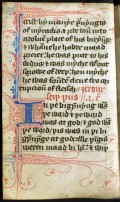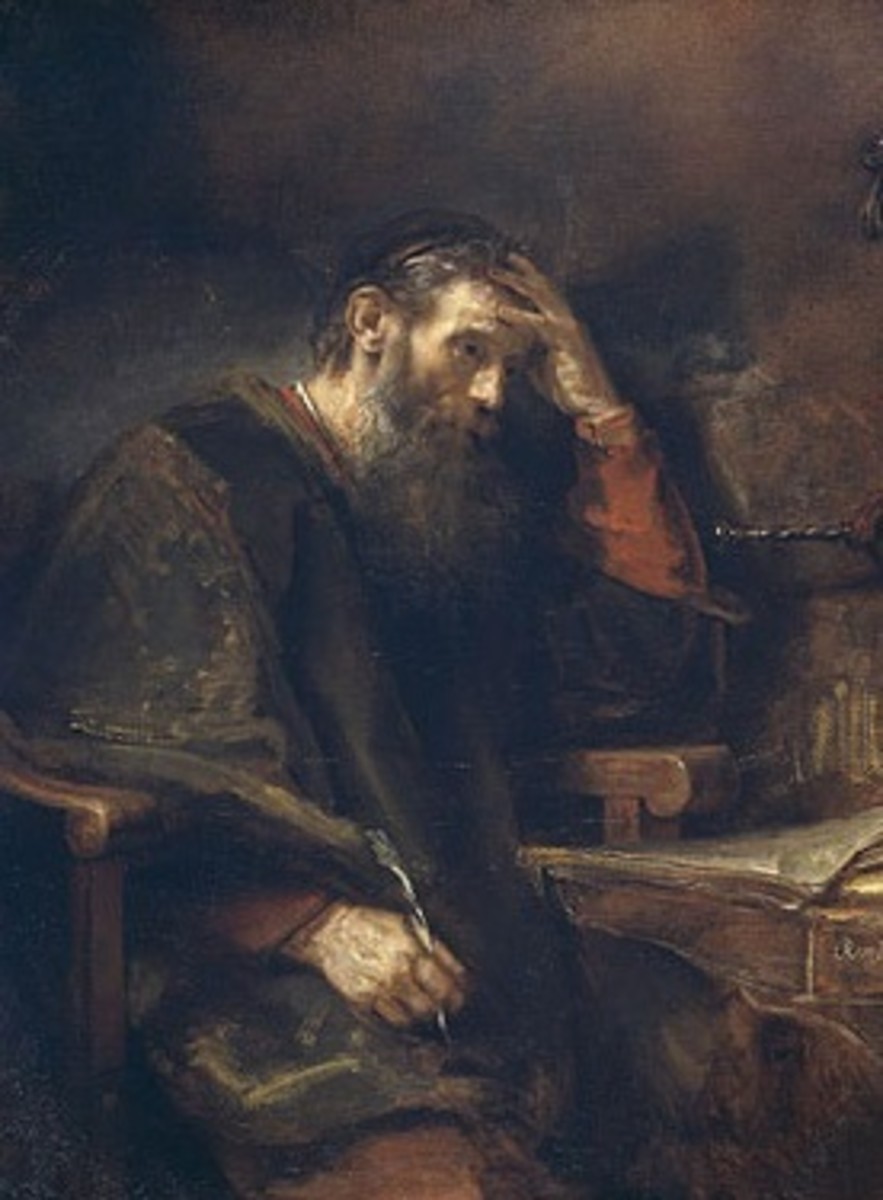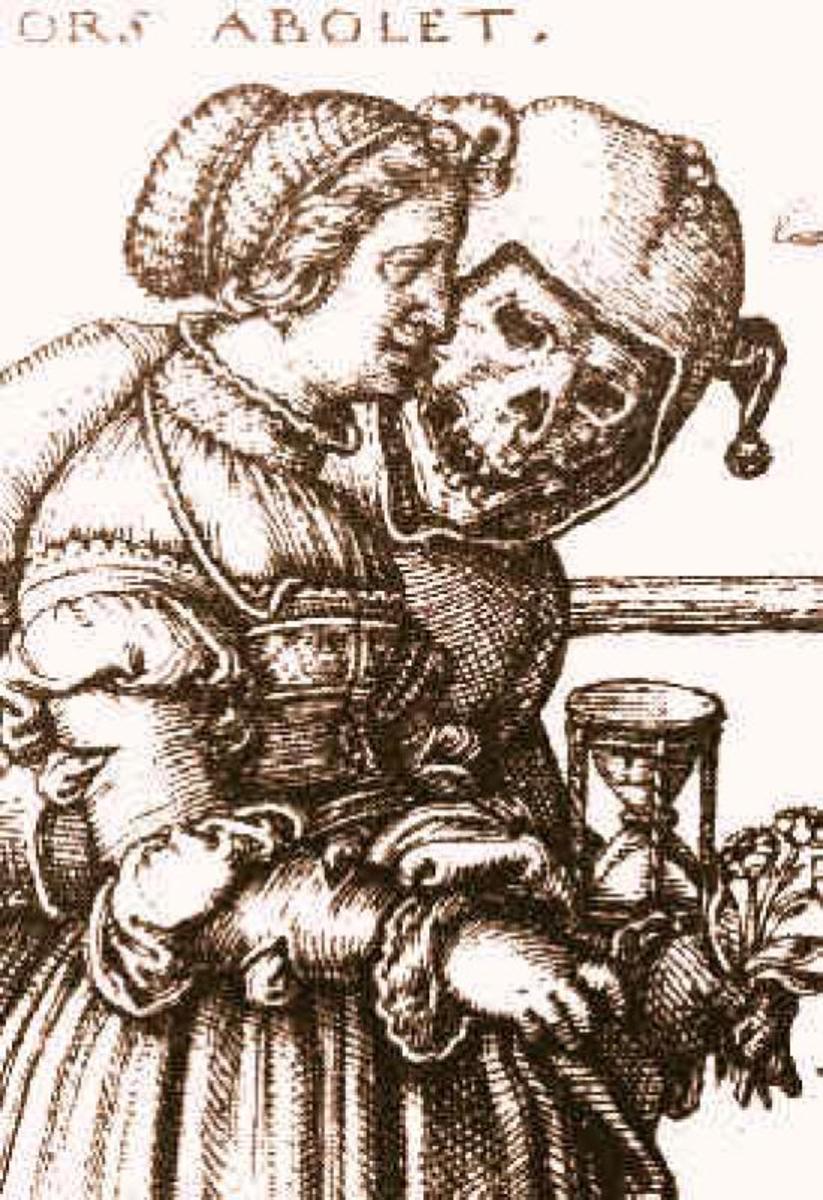The Gospel According to the Apostle John - Part 5

A Divine Schedule
As we come to chapter 7 in our study, we see that John starts off with a phrase he uses often, “After these things”. John uses that term in chapter 3:22, 6:1, 7:1, 11:11, and 21:1. He is laying out a chronology. Chapter 6 finds Christ in Galilee, but before that He was in Jerusalem where there arose a controversy concerning Him at the pool of Bethseda. It would seem that these events took place about a year before the cross during the month of April. Chapter 7 puts Him about six months before the cross in October.
During the last year of His ministry Jesus spent most of the time in Galilee. He no longer walked in Jewry, or Judea because of a plot to kill Him. Jesus was following a divine schedule given to Him by His Father. Now, get your Bible, and let us go verse by verse.

v. 1—a storm is brewing. It will reach its zenith at the cross 6 months later.
v. 2—The Feast of Tabernacles, one of the three feasts that every male Jew was obligated to attend at Jerusalem, was kept by Jesus.. Jesus kept the law. The other two feasts were the Passover, and the Feast of Pentecost. See Leviticus 23 for the record of the Feast of Tabernacles. The Feast was a great celebration commemorating the Jewish deliverance from Egypt. They literally camped out in “tents” or “booths” or “tabernacles”.
Jewish Feasts
This pictured the Jews living in tents as they traveled the road to freedom. Water from the Pool at Siloam would be poured out in the temple. This was a reminder of how Moses called out water from the rock. During the feast, they illuminated the inner court with a parade of torches. This commemorated the pillar of fire that led Israel by night.
All of the Jewish feasts represented a picture of their Savior These Old Testament Feasts would be completed in the New Testament, or a time yet future: 1. The Jewish Feast of Unleavened Bread represented the Cross; 2. The Feast of First Fruits was a picture of the Resurrection; 3. The Feast of Pentecost represented the beginning of the church on the Day of Pentecost; 4. The Feast of Trumpets foretold the rapture; 5.The Day of Atonement looked forward to the Tribulation; 6. The Feast of Tabernacles pictures Christ’s reign on earth for 1,000 years; 7, Of course, Passover was a picture of the death angel passing over the children of Israel as they prepared to flee from Egypt, just as the death angel passes over us when we are covered by the blood of Christ.
v.3-5—In these verses we see that Jesus’ own family did not believe in Him. The names of the brothers are given in Matthew 13:55.“Is not this the carpenter's son? is not his mother called Mary? and his brethren, James, and Joses, and Simon, and Judas?” His half-brother James is the author of the Epistle of James. His half-brother Judas probably wrote the book of Jude. In the beginning of Christ’s ministry, they did not believe, however.
v. 11-13—The “Religious leaders are looking for Him. They know He must come because the law required it. Christ came secretly with His disciples, possibly entering in through the sheep gate.

Prophecy Fulfilled
v. 14—Jesus suddenly appears in the temple fulfilling the prophecy of Malachi 3:1, “Behold, I will send my messenger, and he shall prepare the way before me: and the Lord, whom ye seek, shall suddenly come to his temple, even the messenger of the covenant, whom ye delight in: behold, he shall come, saith the LORD of hosts.”
Skipping ahead -
v. 37-39—Jesus predicts the coming of the Holy Spirit.
v. 45—Where is the prisoner?
v. 46—They are confounded by the Word of God.
The Adulterous Woman
Now to Chapter 8. The Pharisees bring a woman taken in adultery, in the very act (verse 4). The Scribes and Pharisees are constantly trying to find fault with Jesus, and this is just one more effort on their part. Verse five tells us that they came tempting Him. It is obvious, however that they did not understand the Scripture. That seems to be the way it is today for many people. They think they have spiritual knowledge, but when they open their mouth to speak, it is evident that they do not. They did not consider Deuteronomy 22:22 which says, “If a man be found lying with a woman married to a husband, then they shall both of them die, both the man that lay with the woman, and the woman: so shalt thou put away evil from Israel.” Only the woman was brought. Where was the man?
Let us get two working definitions. First, adultery is committed when a married person has a sexual union with another person. Fornication is the sexual act of an unmarried person with someone other than his wife, or vice versa, with someone other than her husband. This was an act of adultery according to verse 4. Moses commanded that both should be stoned.

The Roman Government which was in power at this time required the two parties to answer by trial. The Pharisees and Scribes, in their self-righteous wisdom thought they had Jesus cornered. Surely, Jesus as a good Jew would follow the Mosaic law (verve 5), and if He did, He would be breaking Roman law. Either way He would have to answer to somebody. “This they said, tempting him…” (verse 6).
Scribbling in the Sand
Also in verse 6, we see Jesus ignoring the Pharisaical leaders. Just what was He scribbling as He knelt down and drew in the dirt? We will never know, at least until we get to Heaven. But what we do know is that He “…wrote on the ground, as though he heard them not.” Sometimes for all the words we use, we say very little, if anything. Matthew 12 :36 says, “But I say unto you, That every idle word that men shall speak, they shall give account thereof in the day of judgment.” The words spoken by these false religious leaders were idle at best. The word idle here means to be unemployed, useless, lazy. These words were “unemployed”. They had no purpose. It was obvious that they misread all that the Savior was about.
The Pharisees would not be ignored. They continued to ask Jesus about His thoughts. He gave them in verse 7, “He that is without sin among you, let him first cast a stone at her.”
Jesus cut straight to the heart of the matter—but not immediately. You see, He had something to do with the words of James 1:19, “Wherefore, my beloved brethren, let every man be swift to hear, slow to speak, slow to wrath.” We might learn from the Savior’s example to think before we react. Romans 2:14, 15 says, “For when the Gentiles, which have not the law, do by nature the things contained in the law, these, having not the law, are a law unto themselves: Which show the work of the law written in their hearts, their conscience also bearing witness, and their thoughts the mean while accusing or else excusing one another.”
It was by their own conscience that one by one they left the woman and the Lord alone. Only the woman waited in the presence of God for forgiveness. Notice in verse 11 that she refers to Jesus as “Lord”. It does not take a Greek scholar to see that the word “Lord” in verse 11 is not the same word that the Pharisees used in verse 4 to refer to the God of Heaven. They called Him “Master”. Truly, Jesus Christ is Lord of all.
Jesus immediately gets back to His teaching lesson from verse 2. He presents Himself as the Light of the World in verse 12. In direct contrast to the darkened deeds of the Pharisees, Jesus presents Himself as the Light. He again claims equality with God the Father in verses 17, 18. Deuteronomy 17:6 requires a true witness to be backed by at least one other person. Jesus, who claims to be the Light of the World, backs Himself up with the witness of the Father who sent Him. Jesus then points out to the crowd that they are not even saved and have no knowledge of the true Father (verse 19). As Jesus continues to speak, many believe, but many do not (verse 30). Of course in verse 32, Jesus points out that if we follow Him and His Word that the Truth shall make us free. Jesus said in John 14:6 that He was the Truth.
Chapter 9 begins with Jesus meeting a man that is blind from birth. This is the only example in Scripture where Jesus heals a man of congenital blindness (verse 1). Remember that in chapter 8 Jesus reveals Himself as the Light of the World. We remember the example given of the tree that falls in the woods and no one is there to hear it. Does it still make a sound? The truth of the matter is that sound waves will go out from the tree, but if there is no recipient of the sound to interpret it, no one hears it.
The same is true with light. Jesus presents Himself as the Light of the World, but if no one sees Him as such, the Light is still undetected. A story was told of some men trapped in a mine from an explosion. After remaining in total darkness for several days they were finally rescued. When the rescuers brought in the light one man said, “Why don’t you turn the light on?” It was at this point that the man and his rescuers knew that he was blind because the light was shining brightly underground.
Just as spiritual light must be given for someone to be saved, there must also be one to receive it. Opening the eyes of the spiritually blind is the work of the Holy Spirit, not yours and mine. We are equally successful each time we give out the Gospel message whether or not someone gets saved. Our job is to let the Light shine.
In verse 2, Christ’s disciples ask Him, “Who did sin…?” There were four possible answers that could have been given then and now as well. The heathen believed in reincarnation, and thus believed that someone born with an infirmity was simply living out their karma in the next life. Of course the Jews completely disagreed with this idea. They may have been thinking of Exodus 20:5 where it says, “…the LORD thy God am a jealous God, visiting the iniquity of the fathers upon the children unto the third and fourth generation of them that hate me;” This would put the burden of punishment on the fathers.
Then the sin of Adam was passed to each individual making all to be partakers of sin, disease, and death. Lastly the Jews believed that a child could sin in the womb prior to birth. It may have been with these thoughts in mind that the disciples raised this question concerning this man’s blindness.
Jesus answers the question in verse 3. It was neither the sins of this man or his parents that caused his blindness, but it was for the glory of God. Compare this with II Corinthians 12:7-10. “And lest I should be exalted above measure through the abundance of the revelations, there was given to me a thorn in the flesh, the messenger of Satan to buffet me, lest I should be exalted above measure. For this thing I besought the Lord thrice, that it might depart from me. And he said unto me, My grace is sufficient: for my strength is made perfect in weakness. Most gladly therefore will I rather glory in my infirmities, that the power of Christ may rest upon me. Therefore I take pleasure in infirmities, in reproaches, in necessities, in persecutions, in distresses for Christ's sake: for when I am weak, then am I strong.”
Three times Paul prayed to be delivered from a physical aliment and God’s reply was, “My grace is sufficient for thee: for my strength is made perfect in weakness.” God got the glory in Paul’s life, just as He would here. Consider the life of Job. He was not instantly healed. It just simply is not always God’s will to heal. The “faith healers” of today have it all backwards. God never meant for everybody to be perfectly healthy. For that matter God never meant for everyone to be prosperous. Jesus Himself had no place to lay His head. Remember, that you too, were created for God’s glory.

Again, Jesus mentions in verse 5 that He is the Light of the World, and He came to shine (verse 4). In verses 6 and 7 we see two things. First, Jesus had to touch the blind man. He made spittle and applied it to the blind man’s eyes. Then, the blind man had to obey and go wash himself in the pool of Siloam. We see that as he obeyed he came forth seeing (verse 7).
The blind man gives his testimony in verse 10-16. This of course enrages the Pharisees because (among other reasons) in verse 14, we are told that it was the Sabbath day. The Pharisees see Jesus as breaking the law and this infuriates them even more.
In verse 17, the blind man gives his appraisal of the One who healed him. “…He is a prophet.” Although he has been physically healed, he has yet to be spiritually healed. The Light is shining, but he is not seeing.
Not only does he give testimony to his healing, but so do his parents in verse 18-23. To admit to a miracle would have had the parents excommunicated from the temple, but the miracle was very plain to see. It could not be denied even though the Pharisees hated it. The parents throw the burden back on their son.
The healed man is brought back into court in verses 24 and 25. The Pharisees desperately try to explain away the miracle. They accuse Jesus of being a sinner because He healed on the Sabbath. The blind man answers he does not know about the healer’s personal life. All he knows is that now he can see.
Again, in verse 26, the Pharisees ask, “How were your eyes opened?” They insist on finding a flaw in the man’s testimony to discredit Jesus. They can not.
Notice in verse 28 that the man is reviled. Have you ever noticed that when people do not have an answer for spiritual things they will resort to ridicule and mockery? The Word of God puts to silence ignorant men.
The Light of the World shines brightly in verses 33-37 as the blind man and Jesus meet again. After the blind man was cast out Jesus introduces the blind man to Himself and the Savior.








